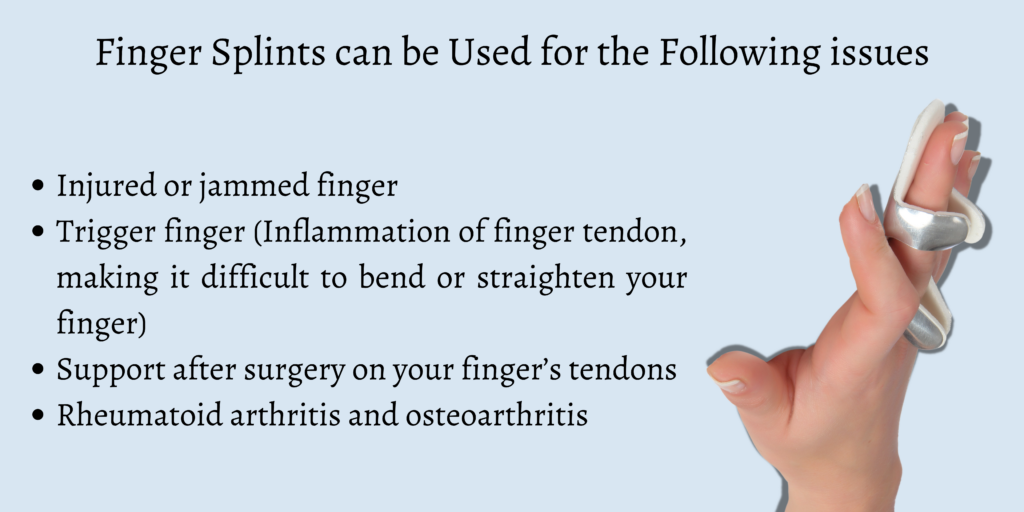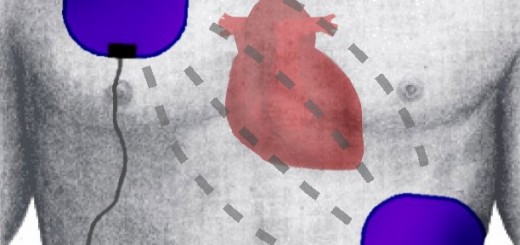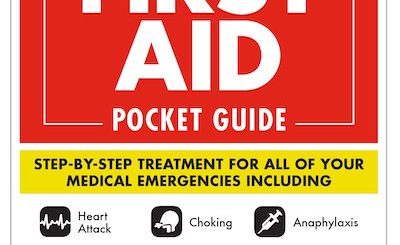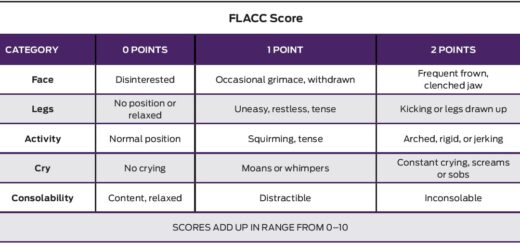What are the Different Types of Splint?
Accidents don’t come knocking at the door. And even the most careful of us can face an accident.
As a result, one can be left with a torn ligament, fractured bone, or deep cut and tear in your flesh.
That is where splints come into the picture.
Splints are rigid plastic, metal, or wooden planks that support, immobilize, and protect your injured body part.
They come in various shapes, sizes, shapes, and materials. One must choose the right one depending on the location and type of injury.
When a splint is used, it stabilizes the injured area, thereby reducing further movement.
Now, one might wonder how it can help.
Splints are a savior when it comes to decreasing swelling and reducing pain. It can help prevent further damage to the tissue of the surrounding muscles.
Splints work great for treating muscle tears, minor sprains, and dislocations.
To know more about splints, read this article.
The different kinds of splints and when and how you can use them are discussed here.
Read on.
Rigid Splints.
This type of splint can be made from many different materials and includes all cardboard, hard plastic, metal, or wooden types of splints. The type of splint that is made rigid by evacuating air from a moldable splint (vacuum splint) is also classified as a rigid splint. Rigid splints should be padded well and should always extend one joint above and below the fracture.
Soft Splints
This type of splint includes air splints, pillows, and sling and swathe-type splints. Air splints are good for fractures of the lower arm and lower leg. Air splints have the advantage of compression, which helps to slow bleeding, but they have the disadvantage of increasing pressure as the temperature rises or the altitude increases. They should not be put on angulated fractures since they will automatically apply straightening pressure.
Other major disadvantages of air splints include the fact that the extremity pulses cannot be monitored while the splint is in place, and the splints also often stick to the skin and are painful to remove.
Pillows make good splints for injuries to the ankle or foot. They are also helpful, along with a sling and a swathe, to stabilize a dislocated shoulder.
Slings and swathes are excellent for injuries to the clavicle, shoulder, upper arm, elbow, and sometimes the forearm. They utilize the chest wall as a solid foundation and splint the arm against the chest wall. Some shoulder injuries cannot be brought close to the chest wall without significant force being applied. In these instances, pillows are used to bridge the gap between the chest wall and the upper arm.
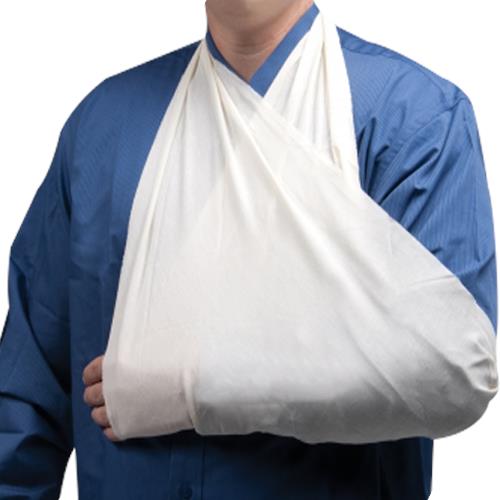
Traction Splints
This device is designed for fractures of the femur. It holds the fracture immobile by the application of a steady pull on the ankle while applying counter traction to the ischium and the groin. This steady traction overcomes the tendency of the very strong thigh muscles to spasm.
There are many designs and types of splints available to apply traction to the lower extremity, but each must be carefully padded and applied with care to prevent excessive pressure on the soft tissues around thee pelvis.
Finger Splints
When an injured or aching finger is injured, doctors usually advise keeping it still and not moving it, as it needs time to heal. But, in reality, life doesn’t stop for a broken, jammed, or sprained finger.
It’s when finger splints can support and stabilize the finger inexpensively.
It is an effective way to treat injuries associated with the tendons in the finger. Compared to casts, splints are more flexible.
Finger splints can be used for the following issues:
- Injured or jammed finger
- Trigger finger (Inflammation of finger tendon, making it difficult to bend or straighten your finger)
- Support after surgery on your finger’s tendons
- Rheumatoid arthritis and osteoarthritis
Finger splints can be classified into four categories: Buddy splints, stack splints, static splints, and dynamic splints.
Buddy splints work great for strained fingers. In these splints, two fingers are taped together.
Stack splints are used when the tip of the finger needs treatment. They are made of plastic, with holes in them for proper airflow. They are available in different sizes.
Static splints can be used to hold a joint in a certain position. There are foam and metal static splints available at local pharmacies. Also, one can go for custom-made static splints made using moldable plastics. These treat repetitive use injuries, fractures, and tendon damage.
Dynamic splints are excellent for stiff joints. These are made of metal, foam, and plastic. One can wear them when one is resting or sleeping at night.
Ankle-foot Orthosis (AFO)
There may be times when one needs to control the motion and position of one’s ankle. That is when one can go for Ankle-foot orthosis, commonly known as AFO. It serves this purpose well.
AFOs can offer great support for correcting deformities and weak limbs.
AFOs can be used to position a limb with contracted muscles into a more normal position.
AFOs can control foot drop too.
This foot drop can be the result of different musculoskeletal and neurological disorders. With the increasing use of AFOs for treating foot drop, they have a new name: “foot-drop brace.”
People use AFOs mostly during the swing phase of gait. They stabilize the ankle along with your foot and offer toe clearance. It lessens the risk of falling.
AFOs are available in different materials, including carbon composite, leather, metal, and heat-moldable plastics. The different types of AFOs are traditional plastic AFOs, Swedish AFOs, and Carbon Fiber AFOs.
Traditional plastic AFOs are used primarily for short-term use. They offer maximum lateral or medial joint stability and can meet various needs. They can be heat-molded for customization. They are highly economical but can be difficult when inserting them into shoes.
Compared to traditional AFOs, Swedish AFOs have a lower profile. They offer moderate lateral stability. They are comfortable to use, with free space for calf muscles and heels. They can fit in shoes quickly, and customize them with heat-molding.
Carbon fiber AFOs are lightweight, semi-flexible, and modern and come in a low-profile design. Perfect for active people, they offer stability and strength.
Knee Immobilizer
Knee immobilizers are best suited for knee injuries that do not require immediate casting, traction, or surgical intervention.
They work great in mild to moderate soft tissue and ligamentous injuries involving the knee. They are easy to apply and can be removed when needed. It makes them a popular choice when it comes to treating knee injuries.
They are available in different sizes, depending on one’s needs.
Cervical Collars
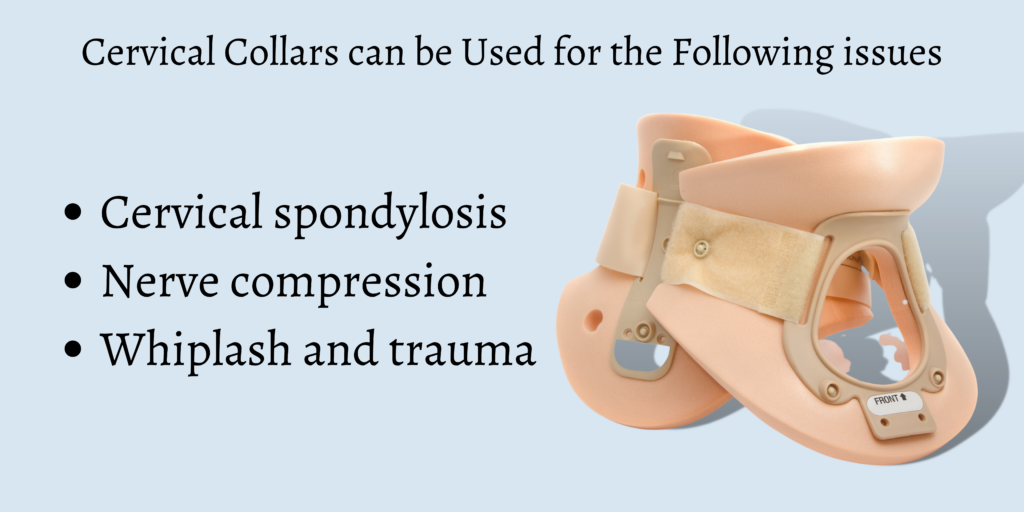
Cervical collars can offer great support to both the head and spinal cord.
Also known as C collars and neck braces are a standard treatment option for neck surgeries, neck injuries, and some cases of neck pain.
They are used to limit head and neck movement. It is used for the short term and supports recovery from pain, surgery, and injury.
Cervical collars can be used for the following issues as well:
- Cervical spondylosis
- Nerve compression
- Whiplash and trauma
Cervical collars are of two types: Soft collars and rigid collars.
They are made from inflatable cuffs, polyethylene, and foam rubber. Soft collars fit well around the neck. They limit side-to-side movement while allowing at least degrees of forward and backward movement.
Rigid collars have a vinyl or foam core and a shell of plastic. They are highly restrictive and stop almost all kinds of neck movement.
Pneumatic Splints
Neurological disorders can be the reason behind the weakness in antagonistic muscles. And this can lead to improper alignment of joints.
If you don’t correct them, they can cause permanent deformities.
Splints can be used to align the joints and prevent further complications. But the commonly used traditional splints come with several disadvantages.
They are difficult to tighten, one needs to custom-make them, and they can burn a hole in one’s pocket.
Pneumatic or air splints are a better option.
These splints are made using pneumatic pressure and can treat various conditions, including trauma, pain, spasticity, edema, early deformities, and hypotension.
They can be used quickly and easily. Also, they are safe to use.
Shoulder Immobilizers
Doctors usually advise people suffering from shoulder injuries not to move their shoulders. Shoulder immobilizers can be used for this purpose.
These immobilizers are designed in such a way that they provide complete support to arms, giving time to shoulders so that they can heal. Also, they keep the arms protected from making different motions.
Compared to slings, shoulder immobilizers are different in the way they work. Shoulder immobilizers keep arms close or attached to the body.
The common parts that a shoulder immobilizer has are a wristband, an armband, and a chest band. The latter is attached to all the other bands.
Typically made of foam material, they keep the arms from going away, up and down from the body.
Hip Spica Casts
Use Hip Spica (body) casts to keep the femur, thighbone, and pelvis still. They are mainly used on children.
These casts hold the spine or the joint above the hip and the knee or the joint below the hip still. It’s to ensure the pelvic bones and thighbones stay immobilized and heal.
Hip spica casts are used after a tendon surgery revolving the hip, after pelvis or hip surgery, and after a fractured thigh bone, also known as the femur.
A spica cast starts from the armpits of a child to the ankle of their legs, and it covers all the body parts that come in between, including the chest. An opening area is there in the genitals so that they can wear a diaper.
Gore-Tex is used in the innermost layer of this cast to make the moisture go away. Then comes a padding made of cotton. And the topmost layer is made of fiberglass. Depending on the child’s requirement, a bar can be between the legs.
The entire procedure of putting the hip spica cast on children is done under general anesthesia.
Now that you know the different types of splints, it will be easier to understand which one to go for and in which circumstances.
Did you find this post helpful? Or do you have any questions to ask?
Feel free to comment; we will get back to you as soon as possible!

